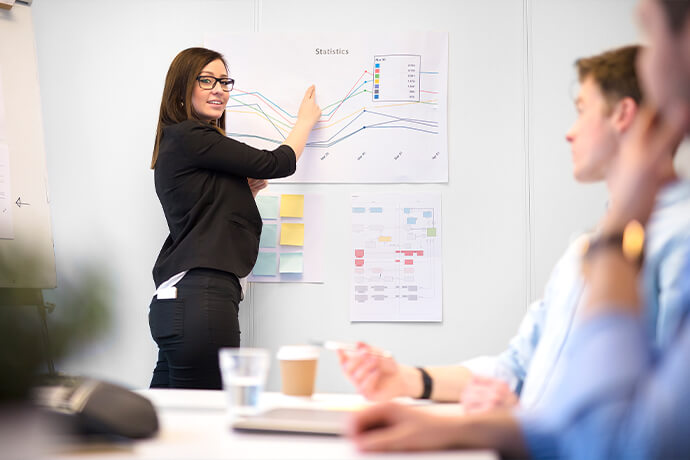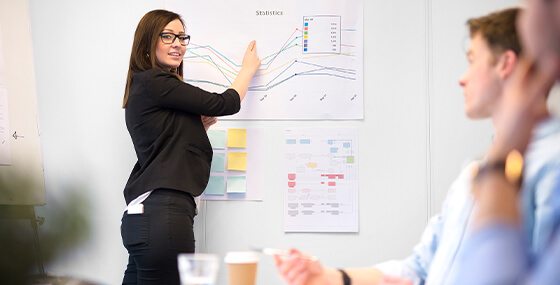 SPEAKERS
SPEAKERS
 TOPICS
TOPICS
Continuous improvement, a transformative mindset and toolkit, drives positive changes across various domains. It's about achieving incremental progress steadily over time. Let's explore how to embrace this approach for lasting success.

Nothing is as it was a decade ago, nothing!
These changes apply to everything — medicine, business, customer service, motivation, and more! These improvements are all thanks to steady advancements called continuous improvements.
But what is continuous improvement?
This concept is a mindset and toolkit that allows you to make steady, intentional, positive changes in all life areas. The continuous improvement process is always about achieving small milestones over time, and we are here to guide you on how to do so.
This guide will highlight a path you can take employing the best continuous improvement methodologies and techniques. We’ll start by helping you with a questionnaire you can use to decipher what needs improvement. Then, you’ll learn the tools to enhance them and the pointers to help you stay on that path.
SpeakerAgency advocates you use these to unleash excellence.
By the end, you’ll be equipped to start your journey to excellence, business, or personal growth, one step at a time.
Ready?
Let’s go.
Remember when you were first learning the skill you boast to master today?
How did it feel to hand over your fast task or send your first business proposal? Was it scary? Did you feel lost?
Most of the time, being scared and feeling lost are common traits when starting or growing up in your sector. However, small actionable steps helped you overcome the scare and become better and better at your craft.
This emphasizes the importance of self-assessment because knowing where you are will guide your steps. Below is a questionnaire that may help you assess areas that need continuous improvements to get you to the top.
Answering the above truthfully will help you plan the best continuous improvement process tailored to your situation.
After setting up the process, choose the best constant improvement methodologies and proceed to the techniques.
When you think of a continuous improvement methodology, picture a roadmap to excellence. The two structures we’ll discuss in this section offer an approach you may use to tackle a challenge and implement change. The two are:
This methodology involves planning, executing, evaluating, and refining.
You start by defining the problem or opportunity for improvement (using the assessment above.) Next, you develop a plan to address it. Then, proceed to the ‘Do’ phase, where you implement your step-by-step plan. After that, ‘Check’ using tangible results.
Finally, ‘Act’ on your findings. You can either standardize the success or make modifications, where applicable.
This continuous improvement methodology relies on data. Here, you concentrate on minimizing the defects and achieving near-perfect scenarios using five DMAIC steps.
This method takes a deeper dive than the PDCA method because it delivers robust and quantifiable results for continuous improvement.

Once you have selected a methodology, continuous improvement forces you to choose the tools, what we call the techniques. These tools help you execute your plans to pave the way to success. Here are three of the most powerful continuous improvement techniques you can apply:
Please note that these three are the tip of the iceberg. Others you can also consider are Gemba walks (site visits), value stream mapping (to eliminate waste), and root cause analysis ( problem-solving.)
Successful continuous improvement, especially in business, is a collaborative task. In your personal life, you still require pillars or people to keep you accountable. To thrive in excellence and foster a culture of ongoing growth, do the following:
Continuous improvement is a marathon; it isn’t a race. Slow. Steady. Intentional.
You must embrace the process, celebrate the milestones, and learn from the drawbacks. Once you get to the other side, you will be amazed by your progress.
But remember:
You need structure!
Pick a methodology and then a technique that works for you. Employ a method like Six Sigma for product launches or the PDCA. Techniques like brainstorming or 5S will help you implement the changes you decide.
While implementing these, empower, communicate, collaborate, and congratulate on every milestone you reach.
The small steps you make daily, quarterly, or yearly will one day be massive strides!
